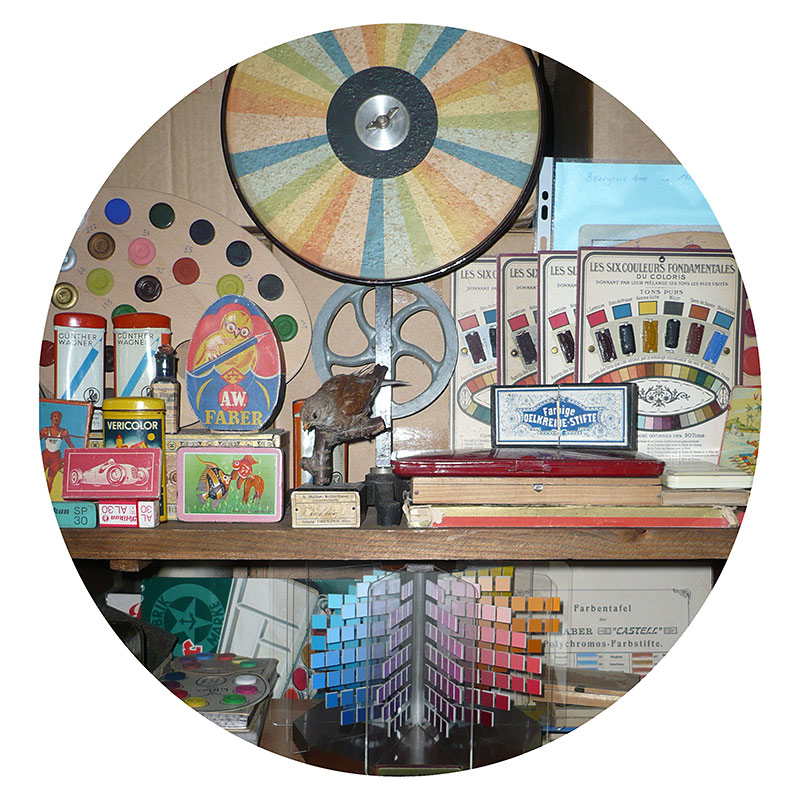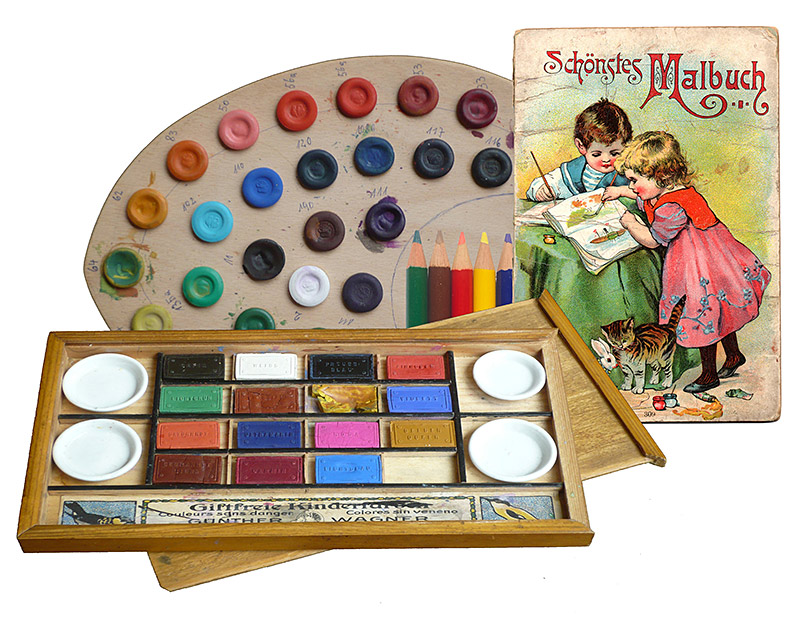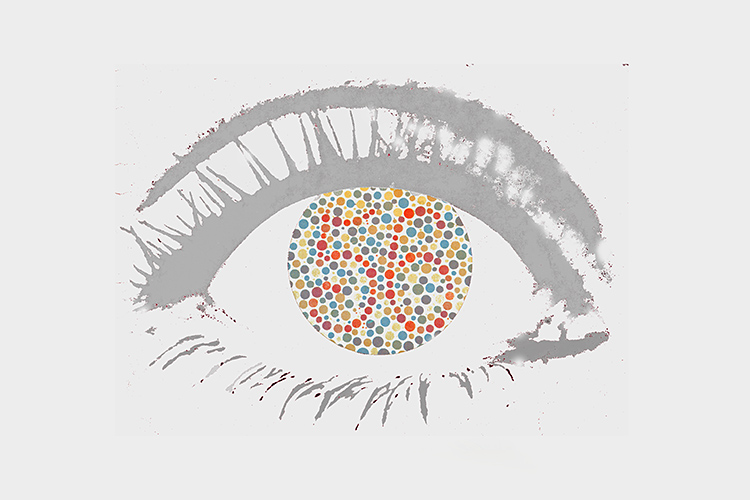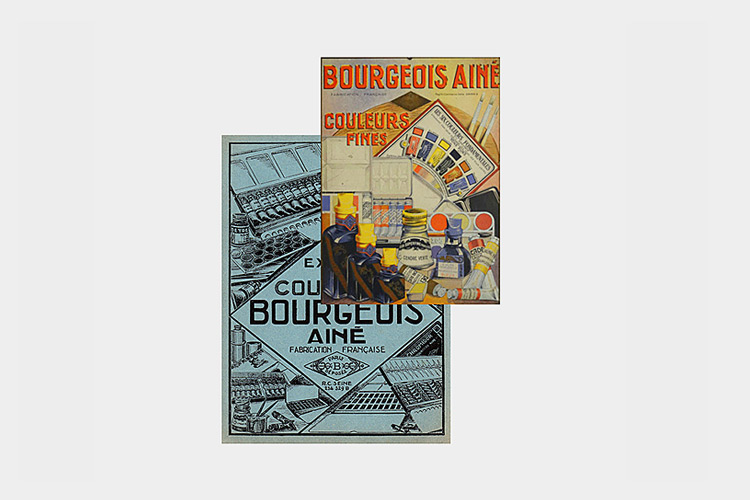The private collection, which has been in existence for almost 30 years, now includes over 1000 books, magazines and non-book materials on color history, color theory and color practice. These include over 600 German-language books from the middle of the 19th to the middle of the 20th century, including the relevant works by Helmholtz, Hering, Bezold, Brücke, Katz, Chevreul in the first German translation, Rood and many more. Other classics such as Moses Harris ‘, Le Blon‘s and Runge's writings are available as facsimiles. A large bundle of Goethe's color theory also originates from this period.
Scientific publications, magazines and color sample works
 Furthermore, about 20 - 30 publications from this period should be emphasized that have so far been largely forgotten or overlooked by color research and are therefore real and often valuable rediscoveries. As an example, Pilgrim's publication may be cited, which was made available to R. G. Kuehni, who reported on it in detail in Col. Res. & Appl. and in the 2006 Color Yearbook. The stock of German-language books is supplemented by the literature from 1950 to the present day with over 400 titles, including many rare publications as well as the relevant works by Itten, Küppers, Gerritsen, Gericke & Schöne and Matile. The same applies to the more than 250 English-language publications, which cover the period from the early 19th century to today, with classics such as Field, Newton, Hay, Munsell, Benson, Judd, etc. There is also other foreign-language literature, including books from France, Italy, Sweden, Spain and the Netherlands. Among the titles of the 'Schwarz Collection', numerous color sample works are particularly noteworthy, starting with illustrated books with color diagrams on individual panels, color systems in atlas form that aim to represent the totality of colors, as well as color collections that show a specific selection of colors for certain areas of application, of which many are shown in the catalog section of the Farre publication (Karliczek / Schwarz 2016).
Furthermore, about 20 - 30 publications from this period should be emphasized that have so far been largely forgotten or overlooked by color research and are therefore real and often valuable rediscoveries. As an example, Pilgrim's publication may be cited, which was made available to R. G. Kuehni, who reported on it in detail in Col. Res. & Appl. and in the 2006 Color Yearbook. The stock of German-language books is supplemented by the literature from 1950 to the present day with over 400 titles, including many rare publications as well as the relevant works by Itten, Küppers, Gerritsen, Gericke & Schöne and Matile. The same applies to the more than 250 English-language publications, which cover the period from the early 19th century to today, with classics such as Field, Newton, Hay, Munsell, Benson, Judd, etc. There is also other foreign-language literature, including books from France, Italy, Sweden, Spain and the Netherlands. Among the titles of the 'Schwarz Collection', numerous color sample works are particularly noteworthy, starting with illustrated books with color diagrams on individual panels, color systems in atlas form that aim to represent the totality of colors, as well as color collections that show a specific selection of colors for certain areas of application, of which many are shown in the catalog section of the Farre publication (Karliczek / Schwarz 2016).
Didactic materials for art classes
 A more recent focus of the collection is didactic materials on the use of color in schools, which, in addition to specific art-pedagogical literature, include above all objects such as paintboxes (so far around 500 from 1835 to the present day), colored pencils, pastel and oil crayons, colored paper, etc. The collection is rounded off by the adjacent area of historical coloring books, where the focus is on the use of color.
A more recent focus of the collection is didactic materials on the use of color in schools, which, in addition to specific art-pedagogical literature, include above all objects such as paintboxes (so far around 500 from 1835 to the present day), colored pencils, pastel and oil crayons, colored paper, etc. The collection is rounded off by the adjacent area of historical coloring books, where the focus is on the use of color.
Of course there are favorites! These usually combine a particularly appealing quality of appearance with their great rarity. Some publications, for example, have samples of such a color brilliance that cannot be achieved in any reproduction. Others are so rare that they are only recorded once or twice worldwide, and several items in the collection are not listed at all, either in literature or in public libraries.
You can digitize all the content of all available color literature, but the quality of the appearance of the objects (paper, print, binding, colors printed or mounted, smell, feel, etc.) can never be recorded digitally. To make the literature on color / color theory primarily available or to want to convey it digitally means not only to disguise its historical character, but above all to completely ignore the sensual qualities that make this field so fascinating. Color can never be grasped purely intellectually! In this respect, physical collections remain important actors or locations for actors and form irreplaceable stores for both the present and the future.
A collection always remains as lively as it is used, expanded and made known.




